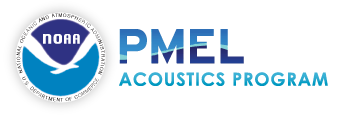Gorda Ridge Response on NOAA Ship DISCOVERER
6/11/96 1430 PST Report From Ed Baker on DISCOVERER
Have started operations with casts at the location of the RAFOS surfacing. Our first cast was at 42 43.29'N, 126 59.38'W. Observed a plume between about 1950 and 2400 m, same depth interval as where we originally seeded the plume (about 5 nm to the SE). Both temp. anomaly (~0.05C) and nephels (~0.042V) were higher than observed in the original seeded plume (though of course much lower than in the original event plume). Because we drifted almost 0.5 nm N during the cast and slightly out of the plume, we elected to make a second cast at 42 42'N, 126 59'W, midway between the two estimates of the RAFOS surfacing that Toby Garfield calculated. Second cast showed dT (~0.08 C) and nephel (~0.065V) anomalies close to the maximum observed in the Gorda event plume. There appears to be little doubt that the event plume is still largely intact and that we have resampled it. We will map the event plume more thoroughly in the next several days, but for logistical reasons our next operation is a repeat of the along-axis tow done on Wecoma that crossed the new lava field and discovered the large plume over the southern basin.
Everything working well so far. With the apparent confirmation that the first RAFOS float was in the original event plume, it is likely that we will deploy the long-term RAFOS in the same plume. We will have to leave Gorda Ridge probably late on the 16th. I understand Bob Embley et al. are investigating the recent Axial seismic signals. We will look forward to hearing the results, though to squeeze in work at Axial too will be difficult.
